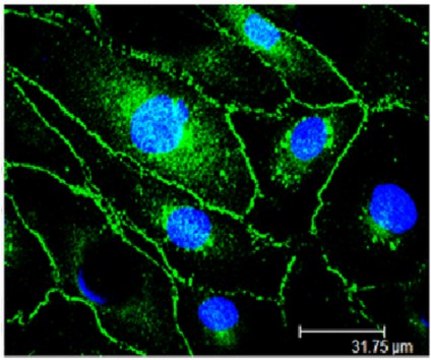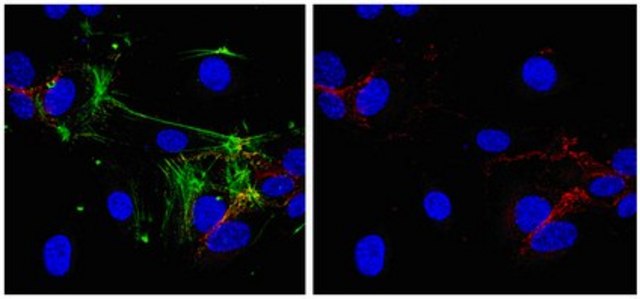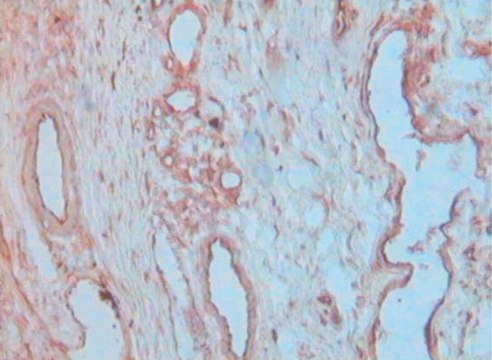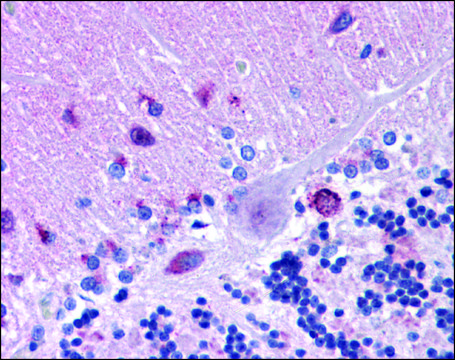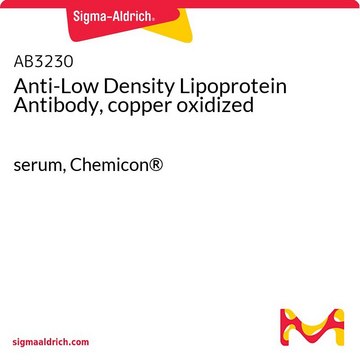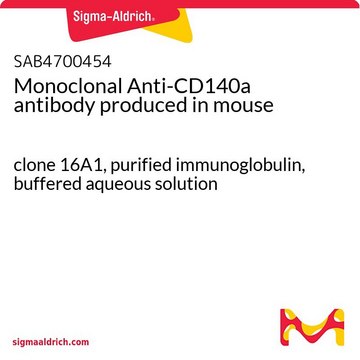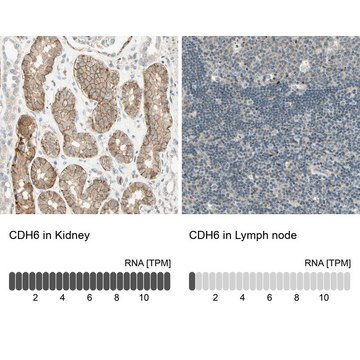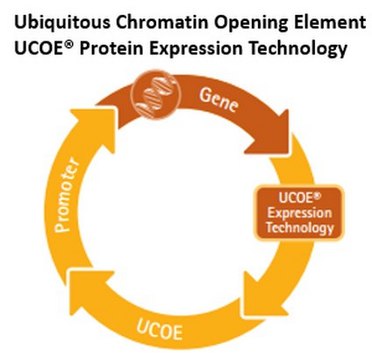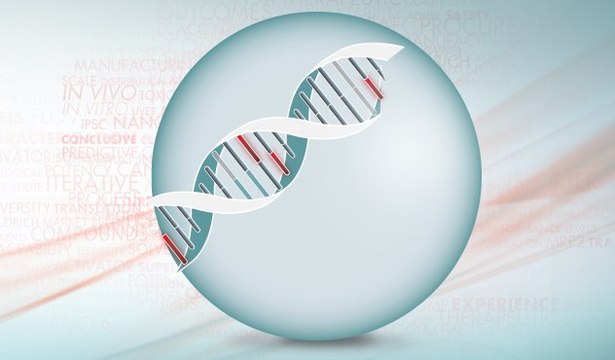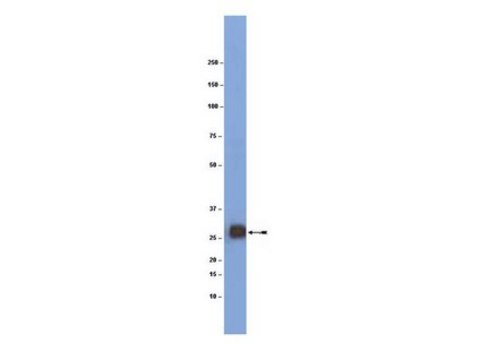推荐产品
生物来源
mouse
质量水平
抗体形式
purified antibody
抗体产品类型
primary antibodies
克隆
BV9, monoclonal
种属反应性
human
技术
activity assay: suitable
immunocytochemistry: suitable
同位素/亚型
IgG2aκ
NCBI登记号
UniProt登记号
运输
wet ice
靶向翻译后修饰
unmodified
基因信息
human ... CDH5(1003)
一般描述
人血管内皮(VE)-钙黏着蛋白也称为CD144,是严格位于细胞与细胞连接处的钙依赖性粘附分子。VE-钙黏着蛋白存在于所有类型的内皮(静脉、动脉、毛细血管和大血管)中。钙黏着蛋白是钙依赖性细胞粘附蛋白。它们优先在连接细胞中以同质方式与自身相互作用。因此,钙黏着蛋白可能有助于异质细胞类型的分类。据报道,钙黏着蛋白通过控制细胞间连接的凝聚力和组织,在血管生成和内皮细胞生物学中起重要作用。与α连环蛋白结合形成与细胞骨架的连接。
特异性
该抗体识别VE-钙黏着蛋白的胞外域。
免疫原
对应于人VE-钙黏着蛋白胞外域的重组蛋白。
表位:胞外域。
应用
活性测定分析:一个来自独立实验室的代表性批次增加了内皮通透性,抑制了血管样结构的组织,并阻止了VEGF对内皮细胞凋亡的保护作用。
研究子类别
粘附(CAMs)
粘附(CAMs)
研究类别
细胞结构
细胞结构
该VE-钙黏着蛋白抗体经验证可用于ICC&酶测定,以检测VE-钙黏着蛋白。
质量
通过免疫细胞化学在HUVEC细胞中进行评估。
免疫细胞化学分析:1 µg/mL的该抗体在HUVEC细胞中检测到VE-钙黏着蛋白。
免疫细胞化学分析:1 µg/mL的该抗体在HUVEC细胞中检测到VE-钙黏着蛋白。
目标描述
计算分子量88 kDa
外形
形式:纯化
纯化的小鼠单克隆IgG2aκ,溶于含PBS而不含0.05%叠氮化钠的缓冲液中。
纯化蛋白G
储存及稳定性
自接收之日起,在-20°C下可稳定保存1年。
处理建议: 收到后,在取下瓶盖之前,将小瓶离心并轻轻混合溶液。分装至微量离心管中,并储存于-20°C。避免反复冻融循环,否则可能损坏IgG并影响产品性能。
处理建议: 收到后,在取下瓶盖之前,将小瓶离心并轻轻混合溶液。分装至微量离心管中,并储存于-20°C。避免反复冻融循环,否则可能损坏IgG并影响产品性能。
分析说明
对照
HUVEC细胞
HUVEC细胞
免责声明
除非我们的目录或产品随附的其他公司文件中另有说明,否则我们的产品预期仅用于研究用途,不得用于任何其他目的,包括但不限于未经授权的商业用途、体外诊断用途、离体或体内治疗用途或对人类或动物的任何类型的消费或应用。
未找到合适的产品?
试试我们的产品选型工具.
储存分类代码
12 - Non Combustible Liquids
WGK
WGK 2
闪点(°F)
Not applicable
闪点(°C)
Not applicable
Cécile Otten et al.
EMBO molecular medicine, 10(10) (2018-09-06)
Cerebral cavernous malformations (CCMs) are vascular lesions in the central nervous system causing strokes and seizures which currently can only be treated through neurosurgery. The disease arises through changes in the regulatory networks of endothelial cells that must be comprehensively
Justyna Lisowska et al.
Journal of cell science, 131(15) (2018-07-22)
Endothelial integrity relies on a mechanical crosstalk between intercellular and cell-matrix interactions. This crosstalk is compromised in hemorrhagic vascular lesions of patients carrying loss-of-function mutations in cerebral cavernous malformation (CCM) genes. RhoA/ROCK-dependent cytoskeletal remodeling is central to the disease, as
Matthew J Stebbins et al.
Biotechnology journal, 13(2) (2017-09-30)
The blood-brain barrier (BBB) is critical to central nervous system (CNS) health. Brain microvascular endothelial cells (BMECs) are often used as in vitro BBB models for studying BBB dysfunction and therapeutic screening applications. Human pluripotent stem cells (hPSCs) can be
Ilse S Pienaar et al.
Neurobiology of disease, 74, 392-405 (2014-12-24)
Deep brain stimulation (DBS) of the subthalamic nucleus (STN) has become an accepted treatment for motor symptoms in a subset of Parkinson's disease (PD) patients. The mechanisms why DBS is effective are incompletely understood, but previous studies show that DBS
我们的科学家团队拥有各种研究领域经验,包括生命科学、材料科学、化学合成、色谱、分析及许多其他领域.
联系技术服务部门